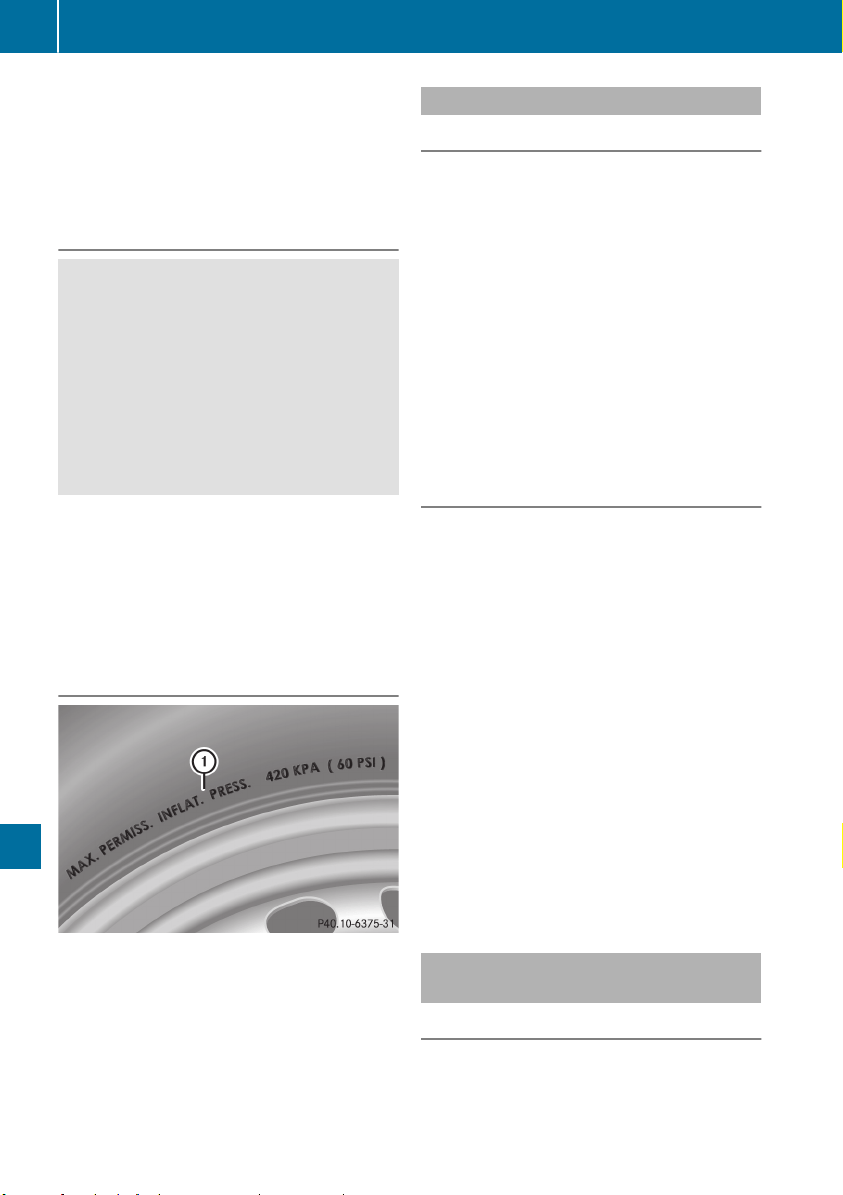Loading ...
Loading ...
Loading ...

Underinflated tires may:
R
overheat, leading to tire defects
R
adversely affect handling
R
wear excessively and/or unevenly
R
have an adverse effect on fuel consumption
Overinflated tires
G
WARNING
Tires with excessively high pressure can
burst because they are damaged more eas-
ily by road debris, potholes etc. In addition,
they also suffer from irregular wear, which
can severely impair the braking properties
and the driving characteristics. There is a
risk of an accident.
Avoid tire pressures that are too high in all
the tires, including the spare wheel.
Overinflated tires may:
R
increase the braking distance
R
adversely affect handling
R
wear excessively and/or unevenly
R
have an adverse effect on ride comfort
R
be more susceptible to damage
Maximum tire pressures
:
Example: maximum permissible tire pres-
sure
Never exceed the maximum permissible tire
inflation pressure. Always observe the recom-
mended tire pressure for your vehicle when
adjusting the tire pressure (Y page 307).
i
The actual values for tires are vehicle-spe-
cific and may deviate from the values in the
illustration.
Checking the tire pressures
Important safety notes
The tire pressure monitor does not warn you
of:
R
incorrectly set tire pressure
R
sudden loss of tire pressure, e.g. from a for-
eign object that has penetrated the tire
Observe the notes on tire pressure
(Y page 307).
Information on air pressure for the tires on
your vehicle can be found:
R
on the vehicle's Tire and Loading Informa-
tion placard on the B-pillar
R
in the tire pressure table in the fuel filler flap
(Y page 144)
R
in the "Tire pressure" section
Checking tire pressures manually
To determine and set the correct tire pressure,
proceed as follows:
X
Remove the valve cap of the tire that is to
be checked.
X
Press the tire pressure gauge securely onto
the valve.
X
Read the tire pressure and compare it to the
recommended value on the Tire and Loading
Information placard or the tire pressure
table (Y page 307).
X
If the tire pressure is too low, increase the
tire pressure to the recommended value.
X
If the tire pressure is too high, release air.
To do so, press down the metal pin in the
valve, using the tip of a pen for example.
Then check the tire pressure again using the
tire pressure checker.
X
Screw the valve cap onto the valve.
X
Repeat these steps for the other tires.
Tire pressure loss warning system
(Canada only)
General notes
While the vehicle is in motion, the tire pres-
sure loss warning system monitors the set tire
pressure using the rotational speed of the
wheels. This enables the system to detect sig-
nificant pressure loss in a tire. If the speed of
310
Tire pressure
Wheels and tires
Loading ...
Loading ...
Loading ...